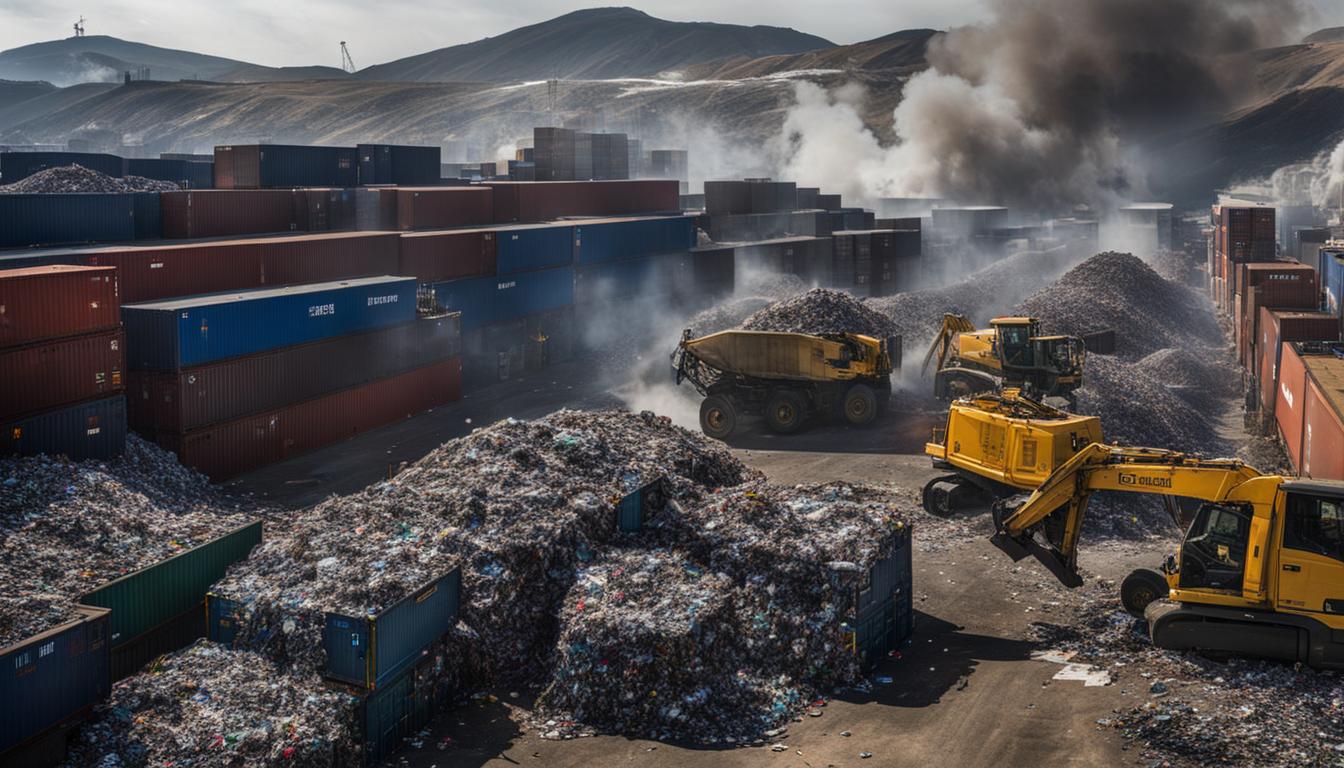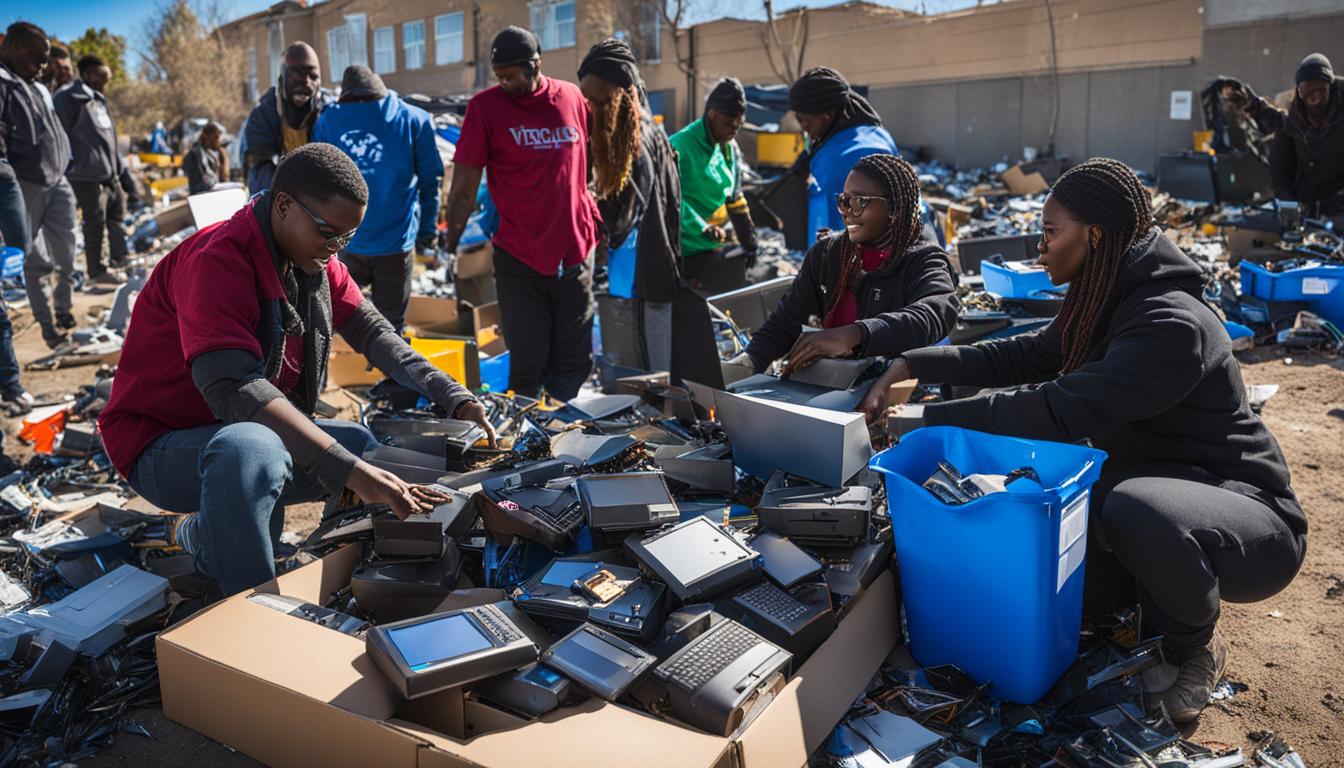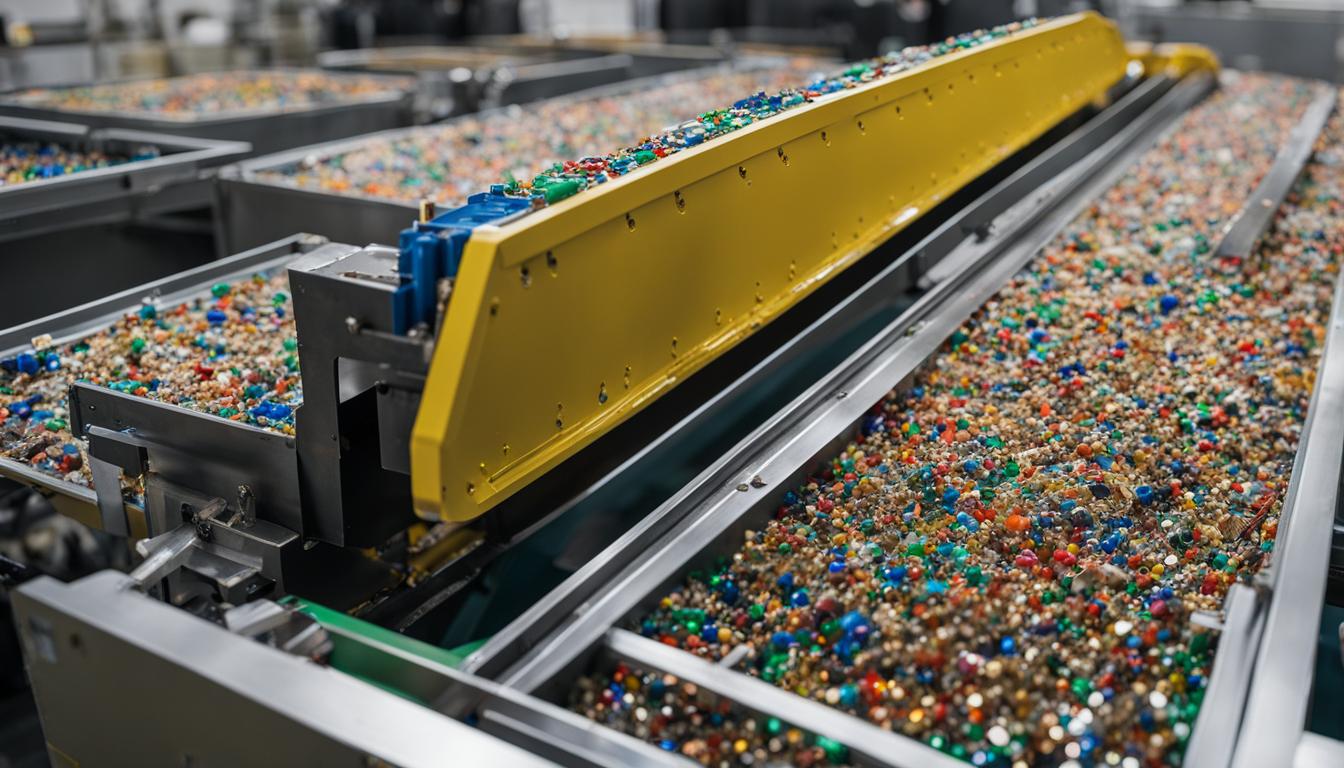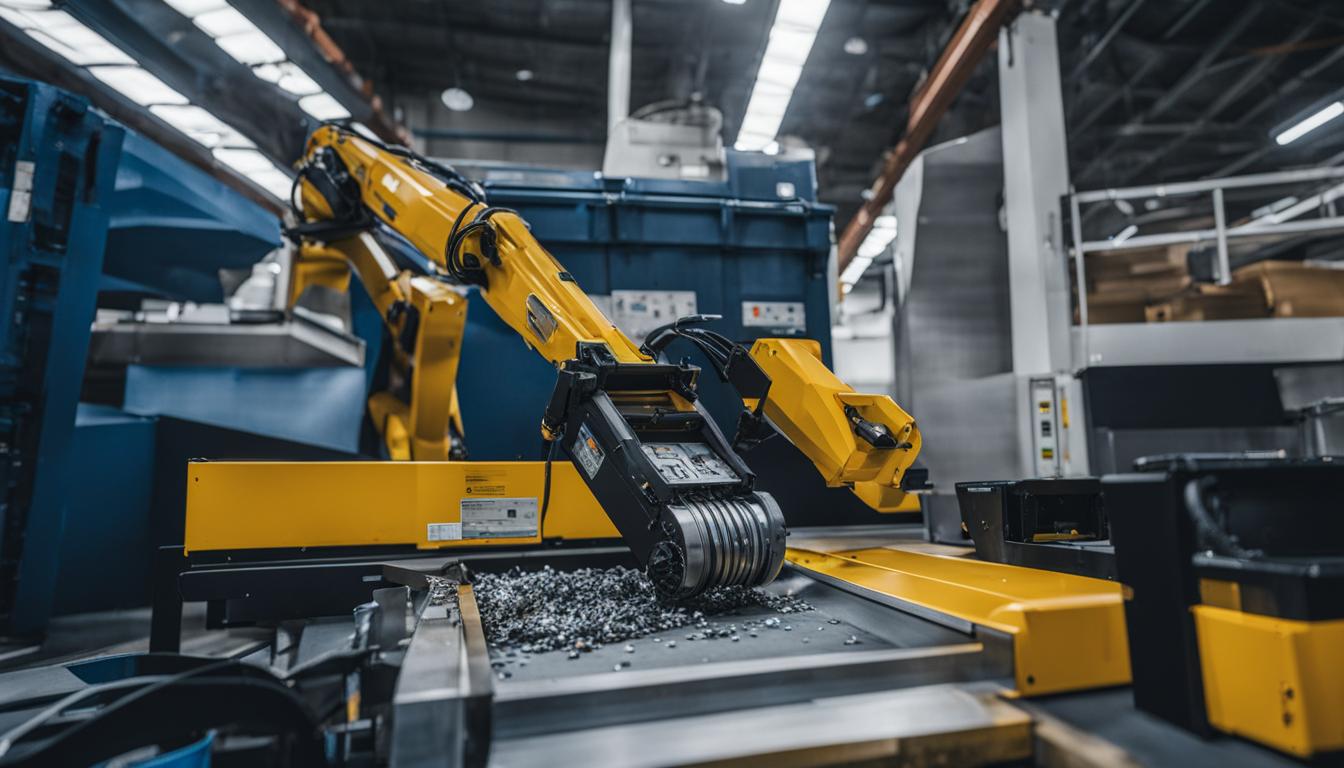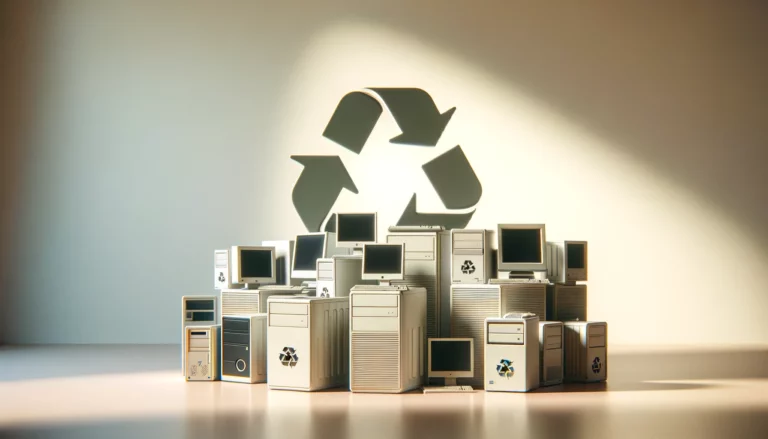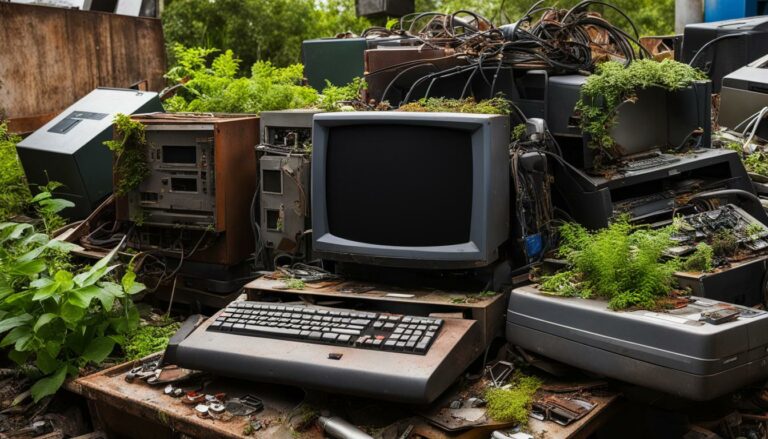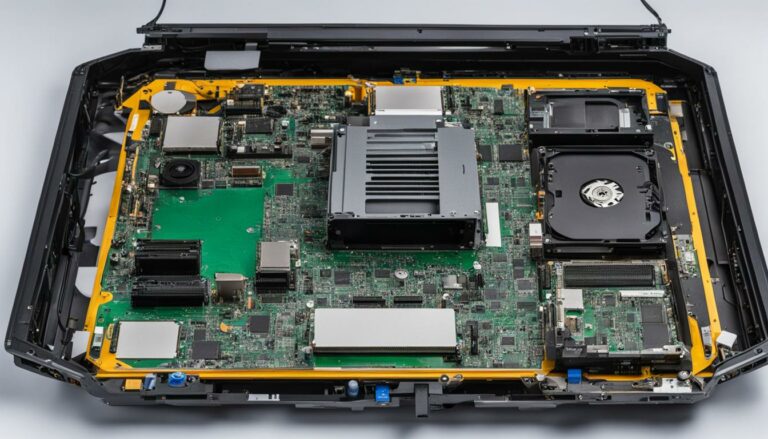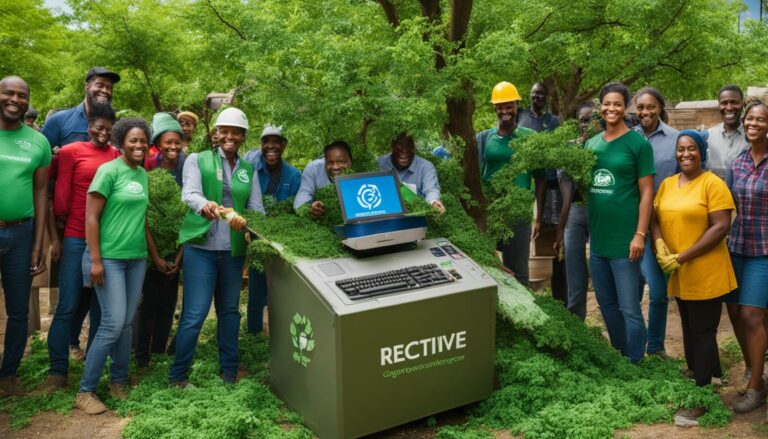A Glimpse into the World’s Biggest IT Recycling Facilities
Electronic waste disposal is a pressing issue in today’s technology-driven world. As the reliance on IT equipment grows, so does the need for sustainable IT solutions and responsible recycling services. In this article, we will explore some of the world’s biggest IT recycling facilities and their contribution to a greener future.
Key Takeaways
- IT recycling facilities play a crucial role in managing electronic waste responsibly.
- Sustainable IT solutions are essential for reducing the environmental impact of discarded IT equipment.
- Responsible recycling services ensure proper disposal and recycling of electronic waste.
- The world’s biggest recycling facilities are at the forefront of eco-friendly electronics recycling.
- By embracing sustainable practices, we can work towards a future with reduced electronic waste and a more circular economy.
The Biggest Recycling Companies Worldwide
When it comes to responsible recycling services and environmentally friendly electronics recycling, the biggest recycling companies worldwide play a crucial role. These certified recycling facilities are at the forefront of IT asset management and are instrumental in promoting sustainability in the waste management industry. Let’s take a closer look at some of the top players in the global recycling market.
| Company | Annual Revenue (USD) |
|---|---|
| Waste Management, Inc. | 15.45 billion |
| Veolia Environmental Services | 29 billion |
| Cleanaway Waste Management Limited | 1.82 billion |
| Covanta Energy Corporation | 1.87 billion |
| Recology | 1.3 billion |
| Biffa plc | 1.48 billion |
Waste Management, Inc. leads the pack with an impressive annual revenue of 15.45 billion USD. As a leader in waste management and environmental services in North America, Waste Management, Inc. sets the standard for responsible recycling practices. Veolia Environmental Services follows closely with an annual revenue of 29 billion USD, providing waste management, recycling, and environmental services on a global scale.
“The involvement of these big players in the recycling industry reflects the increasing recognition of the importance of certified recycling facilities and environmentally friendly electronics recycling. These companies are actively contributing to a more sustainable future by promoting responsible waste management practices.”
Cleanaway Waste Management Limited, based in Australia, operates over 5,300 trucks and generates an annual revenue of 1.82 billion USD. Covanta Energy Corporation specializes in energy-from-waste conversion and industrial waste management services, with an annual revenue of 1.87 billion USD. Recology, based in California, offers waste management and material reclamation services, generating an annual revenue of 1.3 billion USD. Biffa plc, the United Kingdom’s second-largest waste management company, provides a wide range of waste management services, contributing to an annual revenue of 1.48 billion USD.
These companies are committed to environmentally friendly practices and are continuously striving to improve their recycling processes. As the demand for responsible recycling services continues to grow, these certified recycling facilities will play an increasingly vital role in shaping a more sustainable future for the IT industry and beyond.
The Role of Artificial Intelligence in Waste Management
The waste management industry is increasingly embracing artificial intelligence (AI) technology to improve efficiency and increase recycling rates. AI-powered robotics systems, such as those developed by AMP Robotics, are being used in materials recovery facilities (MRFs) to automate sorting processes and increase productivity. AI technology enables robotic sorting with high accuracy and consistency, sorting material at a faster rate compared to manual sorting.
AI can also be used to optimize recycling processes, such as material distribution on conveyor belts, resulting in improved separation quality and throughput. The use of AI in waste management reduces the reliance on manual labor, improves worker safety, and allows staff to be shifted to higher-skilled positions within facilities. Additionally, AI technology can improve traceability and transparency in the recycling process, ensuring the correct levels of purity are maintained and meeting extended producer responsibility schemes.
The Benefits of AI in Waste Management
The benefits of AI in waste management are significant. AI-powered sorting systems increase the value of recovered material and lower labor costs in materials recovery facilities. Robotic sorting systems can work on faster-moving belts and operate consistently, resulting in higher quality recovered material. Robots are flexible and can be adjusted to handle different materials and adapt to changes in material streams and commodity prices. AI technology in waste management improves cost optimization, increases efficiency, and leads to higher recycling rates. Working alongside manual workers, waste sorting robots increase operational safety and reduce the risk of injuries. AI technology also provides real-time analytics and data-driven insights, allowing for continuous improvements in recycling processes.
The Future of Waste Management
The future of waste management lies in data-driven technologies, optimal sorting processes, and continuous innovation to achieve higher recycling rates and create a more sustainable future. The waste management industry is moving towards a more data-driven and technology-driven future. Digitization and the use of AI technology will continue to drive innovation in waste management processes. The collection and analysis of data will allow for more efficient waste management practices and better decision-making. AI technology will play a crucial role in optimizing sorting processes, increasing recycling rates, and reducing waste. Continued investment in top-quality machines and new technology will further improve the efficiency and effectiveness of waste management practices. The transition to a circular economy will place greater emphasis on high-quality recycling and sustainable waste management solutions.
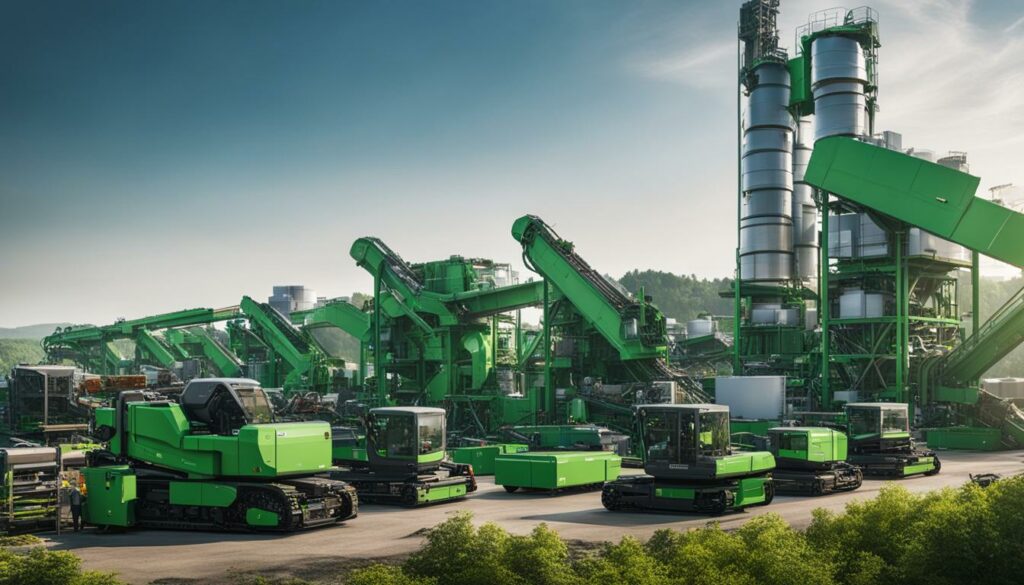
In conclusion, the integration of AI technology into waste management processes brings numerous benefits such as improved efficiency, increased recycling rates, and enhanced worker safety. With the potential for optimizing sorting processes and enhancing traceability, AI has a crucial role in shaping the future of waste management towards a more sustainable and eco-friendly approach. As the industry continues to embrace data-driven technologies, the recycling sector can expect to achieve higher levels of resource recovery and contribute to the creation of a more circular economy.
The Benefits of AI in Recycling
The use of artificial intelligence (AI) technology in waste management has revolutionized the recycling industry, offering numerous benefits and paving the way for a more sustainable future. AI-powered sorting systems have proven to be highly efficient, increasing the value of recovered materials while lowering labor costs. These robotic sorting systems can work on faster-moving belts and operate consistently, resulting in higher quality recovered material.
One of the key advantages of using AI in recycling is the flexibility of robots to handle different materials and adapt to changes in material streams and commodity prices. This adaptability ensures that recycling facilities can meet the ever-changing demands of the market, optimizing their operations and maximizing their recycling rates.
“AI technology in waste management improves cost optimization, increases efficiency, and leads to higher recycling rates.”
In addition to improving efficiency and recycling rates, AI technology also enhances operational safety. By working alongside manual workers, waste sorting robots reduce the risk of injuries and create a safer working environment. This collaborative approach combines the speed and precision of AI-powered robots with the expertise and decision-making capabilities of human workers.
Furthermore, AI technology provides real-time analytics and data-driven insights. Recycling facilities can leverage this information to continuously improve their processes, making data-guided decisions that enhance recycling efficiency, reduce waste, and contribute to responsible recycling services.
| Benefits of AI in Recycling | Description |
|---|---|
| Increased Value of Recovered Material | AI-powered sorting systems improve the quality of recovered material, increasing its value in the recycling market. |
| Lower Labor Costs | Robotic sorting systems reduce the need for manual labor, resulting in cost savings for recycling facilities. |
| Flexibility and Adaptability | AI technology allows robots to handle different materials and adapt to changing market demands, optimizing recycling processes. |
| Operational Safety | Collaboration between AI-powered robots and human workers improves safety in recycling facilities. |
| Real-Time Analytics | AI technology provides data-driven insights that enable continuous improvement and optimization of recycling processes. |
Overall, the benefits of AI in recycling are clear. From increased efficiency and recycling rates to improved operational safety and data-driven decision-making, AI technology is transforming the way we manage waste and work towards a more sustainable future.
The Future of Waste Management
The waste management industry is rapidly evolving, embracing new technologies and innovations to create a more sustainable future. With the rise of IT Recycling Facilities, the future of waste management looks promising. These facilities play a crucial role in responsibly disposing of electronic waste and promoting sustainable IT solutions. Additionally, drop-off locations have become increasingly popular, providing convenient access for individuals to recycle their old electronics and contribute to a greener environment.
IT asset management is another key area where the future of waste management is headed. As technology continues to advance, there is a growing need to efficiently manage and recycle IT assets. Proper asset management ensures that electronic devices are disposed of responsibly, minimizing the environmental impact and reducing electronic waste. This includes securely destroying data on devices before recycling them, protecting sensitive information from falling into the wrong hands.
Innovations in Waste Management
Advancements in technology, such as artificial intelligence, are revolutionizing waste management practices. AI-powered systems can optimize sorting processes, increasing the efficiency and accuracy of recycling operations. By using AI algorithms, materials can be sorted more effectively, improving recycling rates and reducing waste.
Furthermore, the future of waste management will see a greater emphasis on data-driven decision-making. Analyzing data collected from various sources can provide valuable insights into waste generation patterns, recycling rates, and the effectiveness of different waste management strategies. This data-driven approach allows waste management companies to make informed decisions and implement more efficient and sustainable practices.
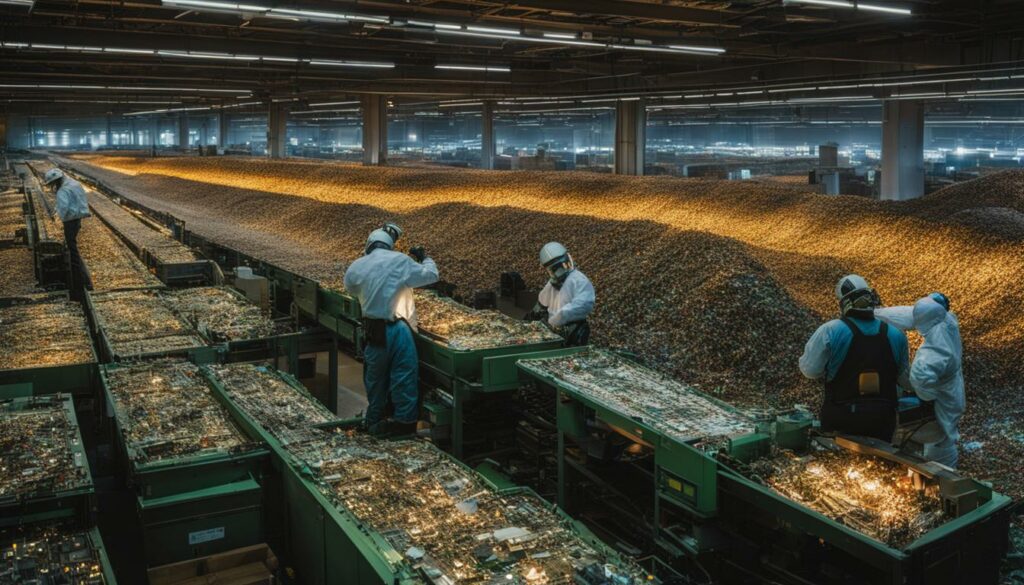
Table: Benefits of IT Recycling Facilities
| Benefits | Description |
|---|---|
| Reduces Electronic Waste | IT recycling facilities ensure that electronic devices are responsibly disposed of, reducing the amount of electronic waste in landfills. |
| Promotes Sustainability | By recycling IT assets, valuable resources can be recovered and reused, reducing the need for new production and minimizing environmental impact. |
| Data Security | IT recycling facilities securely destroy data on devices, protecting sensitive information from being accessed by unauthorized individuals. |
| Convenient Drop-off Locations | Drop-off locations make it easy for individuals to recycle their old electronics, encouraging widespread participation in responsible recycling practices. |
| Sustainable IT Solutions | IT recycling facilities promote the use of sustainable IT solutions, encouraging the adoption of environmentally friendly practices in the technology sector. |
The future of waste management is bright, with IT Recycling Facilities, drop-off locations, and IT asset management playing a crucial role. By embracing new technologies and sustainable practices, we can create a cleaner and more environmentally friendly world for future generations.
Conclusion
The world’s biggest IT recycling facilities, such as Bergen’s automated waste collection system, showcase the potential of responsible recycling services and environmentally friendly electronics recycling. These certified recycling facilities demonstrate the importance of sustainable waste management practices.
The use of AI technology in waste management is transforming the industry, improving efficiency, increasing recycling rates, and reducing the reliance on manual labor. By incorporating AI-powered sorting systems, recycling facilities can optimize their processes and achieve higher recycling rates while reducing costs.
The biggest recycling companies worldwide are at the forefront of responsible recycling services and environmentally friendly electronics recycling. Their commitment to sustainable waste management solutions sets the standard for the industry.
The future of waste management lies in data-driven technologies, optimal sorting processes, and continuous innovation. By embracing these advancements, we can achieve higher recycling rates and create a more sustainable future for generations to come.
FAQ
What is Bergen’s automated waste collection system?
Bergen’s automated waste collection system is one of the largest and most advanced in the world. It connects over 30,000 households and uses vacuum technology to transport waste through an underground pipe system to a central facility for further treatment.
What are the benefits of Bergen’s waste collection system?
The system reduces the need for traditional waste containers and lorries, resulting in reduced car traffic and fire risk in the city. It also sorts waste into four separate fractions, improving recyclability.
Which company is responsible for the waste collection system in Bergen?
Envac, the company behind the waste collection system, has extended the system to more neighborhoods in Bergen, improving waste management efficiency in the city.
How many households does BIR Infrastruktur AS manage waste for?
BIR Infrastruktur AS manages waste for over 383,000 inhabitants in ten municipalities in Norway.
Who are some of the biggest recycling companies in the world?
Some of the biggest recycling companies worldwide include Waste Management, Inc., Veolia Environmental Services, Cleanaway Waste Management Limited, Covanta Energy Corporation, Recology, and Biffa plc.
How does AI technology benefit waste management?
AI-powered robotics systems, like those developed by AMP Robotics, automate sorting processes in materials recovery facilities (MRFs), increasing productivity and sorting material at a faster rate compared to manual sorting.
What are the advantages of AI in waste management?
AI technology improves cost optimization, increases efficiency, improves worker safety, provides real-time analytics and data-driven insights, and enhances traceability and transparency in the recycling process.
What does the future of waste management look like?
The future of waste management lies in data-driven technologies, optimal sorting processes, and continuous innovation to achieve higher recycling rates and create a more sustainable future.

